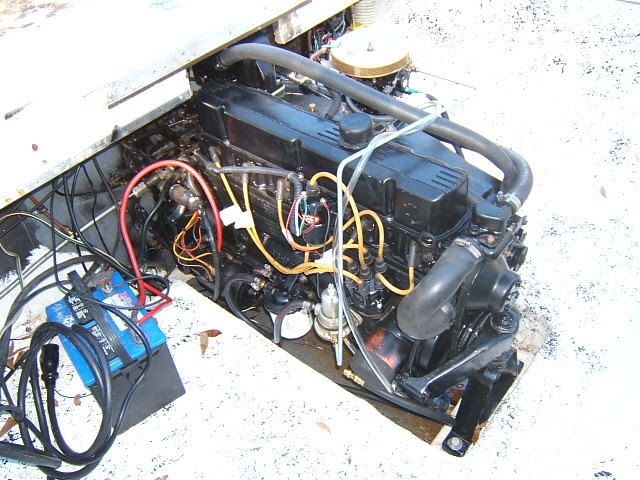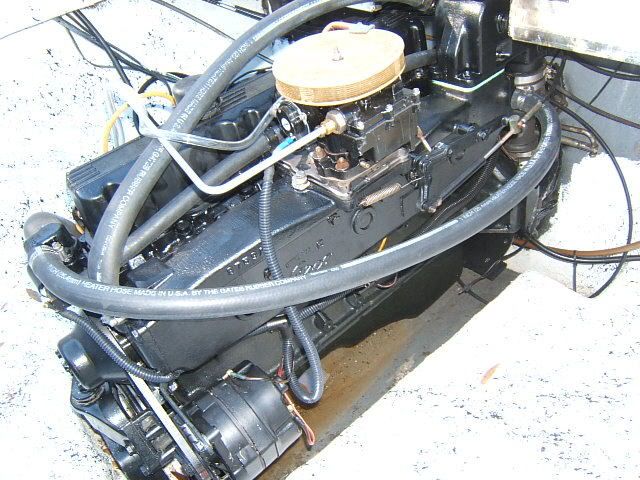Re: Copper tubing for fuel line?
I would consider the following also :
"We have recently seen several issues of concern that appear to be related to gasoline containing Ethanol (Gasohol).
Blends above 10% are likely to cause problems in vehicles not designed for alcohol. These problems include delamination (chemical breakdown) of rubber, plastic, and synthetic components such as; rubber, plastic, and synthetic hoses, fuel lines, plastic fuel pumps, plastic fuel tanks, fiberglass fuel tanks, fuel tanks that are epoxy coated, or with rubberized, or plasticized liners, and aluminum, copper, brass, or bronze fuel system and injection system components.
Vehicles stored with gasoline containing Ethanol in the fuel tank are more likely to have problems with the alcohol causing component corrosion, deterioration, and breakdown.
Special plastics, corrosion resistant stainless steel and other more expensive components must be used in any component that touches fuel containing alcohol."
And MTBE is much more corrosive than ETBE added to fuels. Should you have no choice in your fuel selection.
Full Article :
http://www.enertechlabs.com/ethanol_in_gasoline.htm
Enjoy
OFM
That link is some really good info, Thank you for that. So everyone has a chance to read it I copied and pasted the info in the link down below


Ethanol in Gasoline
Ethanol Problems
Ethanol as a Replacement for MTBE
Ethanol is the Future, Ethanol is Coming, Ethanol is Here; there is a new headline about Ethanol nearly every day now.
Ethanol production is a well understood technology with the potential improve dramatically in efficiency that may in the future offer a partial solution to US energy needs. It is not the be all, end all, but it can help.
Beyond the current hype, Ethanol plays a small but important role in today?s fuels marketplace. In the future this role will likely become much more significant and even vital to our energy program.
Ethanol is best known as ?grain alcohol? or sometimes as ?moonshine?. It is produced by taking a grain, such as corn, crushing it and mixing with water and yeasts to form a mash. This mash is allowed to ferment for a few days. The wort (fermented mash) is then boiled in a still and with the help of the cooling tower it distills the vapors into a pure alcohol.
Ethanol can be blended with petroleum gasoline from 0.1%-99.9% to 1%.
Most commonly blends of 10% to 15% are available in the US. However blends up to 85% (E85) are possible for vehicles designed and manufactured to run on this fuel. These Flex-Fuel vehicles have had changes made to fuel system and engine components to prevent problems caused by the solvency and high level of corrosion caused by Ethanol and to the computer software to allow it to operate the engine on a broad range of fuels.
Of late, many Automobile and Light Truck Manufacturers have touted their Flex-Fuel vehicles that will run on gasoline containing up to 85% Ethanol (E85). The problem today is that out of 185,000 gas stations in the US only about 640 currently offer E85.
We have recently seen several issues of concern that appear to be related to gasoline containing Ethanol (Gasohol).
Blends above 10% are likely to cause problems in vehicles not designed for alcohol. These problems include delamination (chemical breakdown) of rubber, plastic, and synthetic components such as; rubber, plastic, and synthetic hoses, fuel lines, plastic fuel pumps, plastic fuel tanks, fiberglass fuel tanks, fuel tanks that are epoxy coated, or with rubberized, or plasticized liners, and aluminum, copper, brass, or bronze fuel system and injection system components.
Vehicles stored with gasoline containing Ethanol in the fuel tank are more likely to have problems with the alcohol causing component corrosion, deterioration, and breakdown.
Special plastics, corrosion resistant stainless steel and other more expensive components must be used in any component that touches fuel containing alcohol.
Ethanol is much more hygroscopic than regular gasoline. This holding of dissolved or suspended water can lead to more component corrosion; and gum, varnish, and carbon deposit formation problems.
Ethanol is not as volatile as gasoline, therefore as the percentage of alcohol increases; the engine becomes progressively more difficult to start in cold weather conditions.
Ethanol is a strong solvent and has been used by industry for hundreds of years to clean various types of contaminants and to dissolve and suspend solids.
Gasoline with dissolved solids (plastics, styrene?s, rubber materials, etc.) that will tend to reform as the fuel evaporates. The reforming of the dissolved material shows up as deposits in the fuel system and engine. This material has shown up as deposits on the throttle plate, injector?s piston crowns, and exhaust valves. It is also a problem with PCV?s systems and turbochargers.
In some cases, particularly in the marine markets, gasoline containing Ethanol has been found to saturate and partially dissolve fiberglass fuel tanks. This has been found to cause severe engine problems and very serious safety concerns from leakage.
There is also a problem where Gasoline, MTBE, Ethanol, and Water come together. This combination can cause formations of a thick, gooey, black material that wreaks havoc on fuel systems.
There are also supply issues because Ethanol must be blended at the rack. Due to its extreme corrosiveness Ethanol will generally not be pre-blended and stored in regular tanks. If pre-blended, it could severely corrode storage tanks and fuel delivery equipment.
One might ask, it the fuel refiners and distributors are that concerned about their equipment, should we be concerned about storage and use in our equipment.
Enertech Labs now offers products to control, ameliorate, and even eliminate these problems. We can disperse water from fuel, reduce or eliminate corrosion, prevent the formation and build-up of deposits, and clean and remove the existing deposits.
Contact Enertech Labs today to ask about our OctaPlus line of products for gasoline's.
Sign up for our Email Newsletter
[ Home ] [ Up ]
Send mail to with questions or comments about this web site.
Copyright ? 2003, 2004, 2005, 2006, 2007, 2008, 2009 Enertech Labs, Inc.
Last modified: 01/12/09























